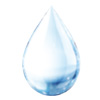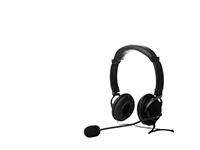Humidification in offices
and conference rooms
Employees must feel comfortable as they work. Motivation, efficiency, and health can be improved
through contemporary design of the workplace. The right humidity has a crucial impact on health and
wellbeing in the office, and protects employees against illness.
Intensive screen work, activities involving a lot of talking, and overly warm offices can, in combination with insufficient humidity in the ambient air, cause significant adverse effects on health. Respiratory tract infections, difficulty swallowing, sore throats, and stinging eyes are common symptoms, particularly in the winter months.
The latest medical studies show that even the immune defenses of the mucous membranes depend crucially on the humidity of the ambient air. The evacuation of microorganisms from the respiratory tract decreases as air humidity drops. For efficient, quick clearing of the respiratory tract and therefore lower susceptibility to infectious diseases, a sufficiently high humidity of at least 45% is required.
Why is the air particularly dry in winter?
Everyone knows the unpleasant effects of excessively dry air: The skin becomes flaky and cracked, and the mucous membranes of the nose and throat, as well as the eyes dry out and become irritated. This makes us feel uncomfortable and more susceptible to respiratory illnesses. But what are the reasons why room air is so unpleasantly dry, especially in the colder seasons?

Situation of indoor air humidity in
winter without active air humidification


Situation of indoor air humidity in winter
with active air humidification
to 8.5 g of water per kilogram of air
Depending on the temperature, the air has a different capacity to absorb water. In winter, the cold outdoor air has only a low capacity to absorb moisture. By heating it (which increases the capacity to absorb moisture), the relative humidity is reduced further and a very dry room climate is created. Without active humidification, a healthy room air humidity of 40 to 60% is barely feasible.

Lecture halls / classrooms


Offices


Conference rooms


Call centers



Hammam, Caldarium and Rhassoul
A hamam is a steam bath in which a special bathing ceremony is held,
and is an important part of Islamic bathing and physical culture.
The focus is...

Steam bath and steam shower
Nowadays, many hotels and health clubs offer spa facilities for the well-being of their guests and members:
A swimming pool, a sauna and more and mor...

Fashion Industry
An “electric shock” when touching a clothes rail; hair that takes on a life of its own when trying on clothes. Dry air can really spoil the fun of go...

Food Storage
Hygroscopic (moisture-drawing) foods interact with ambient humidity. They either absorb water vapor from their environment or give off water vapor.
T...

Data Center
In data centers, humidifiers primarily ensure that electrostatic discharges and damage to sensitive hardware are prevented.

Electronic Industry
The dryer the air, the quicker electrostatic charges occur and the stronger they are. Consistent protection against ESD (electrostatic discharge) has...

Automotive Industry
To achieve optimum results, paintwork must be applied to vehicles in optimum environmental conditions. Crucially, humidity and temperature must meet ...

Call Centers
A good room air humidity in a call center not only ensures the employees’ well-being, but also their performance and health. Today, respiratory illne...

Museums
Museums are charged with the task of preserving treasures of humanity and art. The innumerable, often unique and irreplaceable exhibits are worth man...

Aerospace Industry
Reliable functional quality of all components is essential for the aerospace industry. Inadequate humidity can lead to damage and faults in electroni...